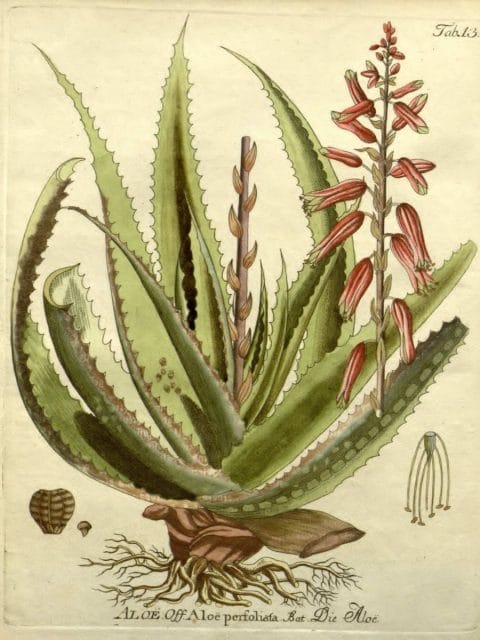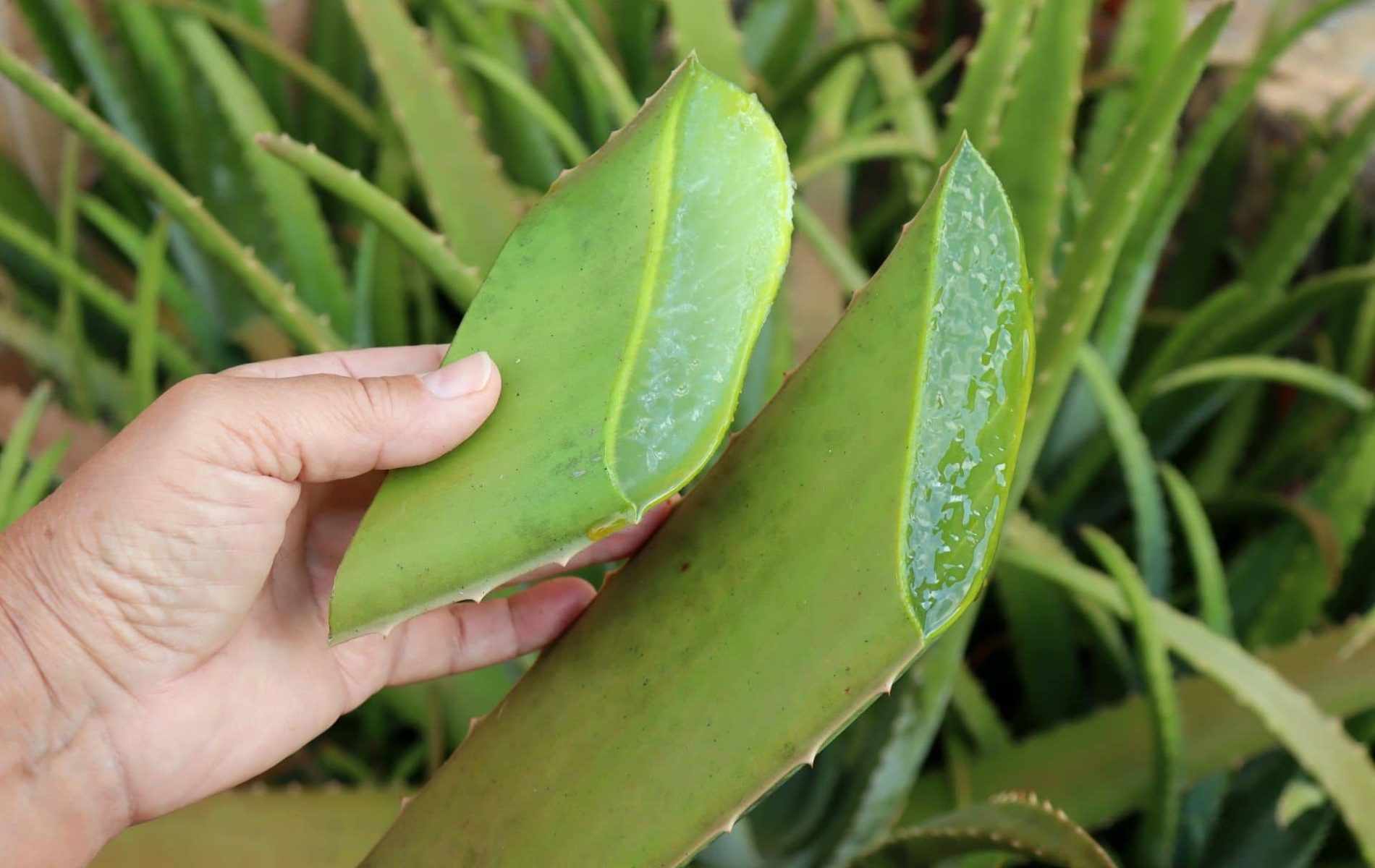Aloe Vera is a thousand-year-old plant that has gone through different eras and civilizations to become one of the world ‘s most famous and appreciated natural medicines. Its use dates back to ancient times when this succulent was considered a miracle cure for skin and wound care and was also used for medicinal purposes.
Aloe Vera has always been of great interest for its therapeutic and cosmetic properties, and has become a staple ingredient in the manufacture of natural remedies, creams, lotions and beauty products.
But what is the origin of aloe vera and what are the historical records of its use in the past? So what are the properties that make aloe vera a symbol of beauty and health?
In this article we will explore the history of aloe vera in antiquity and its uses, discovering the properties that have made this plant one of the most popular around the world.
ALOE VERA PLANT
History of Aloe Vera:
Aloe Vera, scientifically known as Aloe Barbadensis Miller, is a perennial succulent plant belonging to the Asphodelaceae family that can reach a height of about 60-90 cm, although it is usually smaller.
Its fleshy, green leaves are long and narrow, with serrated edges and pointed tips. The plant also produces yellow, orange or red tubular flowers that grow on stems up to 90 cm tall.
Aloe Vera is a plant that is very well adapted to hot and arid climates, and grows mainly in subtropical areas such as Africa, the Mediterranean, and the arid regions of South and North America. However, due to its popularity as an ornamental plant and as an ingredient in many skin care products and dietary supplements, aloe vera is grown all over the world although cultivation is more common in countries with warm climates.

Aloe Vera plant, how to recognize it?
It is not entirely clear where aloe vera originated, as this plant has been used by many ancient cultures in different parts of the world. However, it is believed that the
Aloe Vera is native to Africa, like many other plants, particularly the North African and East African regions.
Aloe Vera was subsequently spread to many parts of the world through trade and human migration and is now cultivated in many tropical and subtropical regions of the world such as India, Mexico, China, South America, Spain, and Italy.
Aloe vera is a very adaptable plant and can survive in arid and hot climates because of its ability to store water in its succulent leaves.

The benefits of having an Aloe Vera Plant in the home:
There are numerous historical accounts of the use of the Aloe Vera in the pastfrom different cultures around the world. Here are some examples:
- Ancient Egyptians used aloe vera to treat wounds, burns, and skin diseases, as well as for beauty purposes, such as making ointments and skin care lotions. It was even used as an ingredient in the preparation ofmummification balms, as in the case of Pharaoh Ramses II .Depictions of aloe vera have been found on the walls of Egyptian tombs dating back some 4,000 years. From Egypt also comes the Papyrus Ebers, as well as the first “official document” in which Aloe Vera is mentioned in a long series of recipes for the treatment of many ailments.
- There are references of the use of Aloe Vera also from the ancient Sumerians. In fact, it dates back to 2,000 B.C. A Sumerian clay table found in Mesopotamia (in present-day Baghdad) in which Aloe is mentioned as a medicinal plant.
- The ancient Greeks and Romans used aloe vera to treat wounds, burns, and skin diseases. The ancient Greek philosopher and physician Dioscorides described the healing properties of aloe vera in his book “De Materia Medica“, written in 70 AD. Also Hippocrates, the “father of Western medicine” mentions Aloe Vera in his treatises for its the anti-inflammatory properties, regenerating, disinfectants.
- In the “Charaka Samhita“, a classic work of Indian Ayurvedic medicine dating back to the 2nd century B.C., aloe vera is described as a useful plant for treating digestive, skin and diabetic disorders. Even Gandhi, more recently, stated that Aloe, together with his faith in God and his site of life, helped him overcome his long fasts.
- The use of Aloe Vera is mentioned in the Bible (Numbers 24:6, John 19:39 and Psalms 45:8), for example when used for theanointing of Jesus’ body on descent from the cross.
- In China, aloe vera was used in traditional medicine to treat digestive disorders, skin diseases and diabetes, as well as to maintain general health. Aloe vera has also been a popular plant in Chinese culture for its ornamental beauty.
- Also Christopher Columbus mentions Aloe when, On his voyage to discover America, he emphasized the importance of Aloe as one of the 4 indispensable plants for man along with wheat, vine and olive tree because it gave health.
- Finally, even the Templars used aloe with palm wine and hemp for good health and longevity and called such drink “Elixir of Jerusalem“.
These historical records show that aloe vera was a very valuable plant for many ancient cultures, which recognized its healing and cosmetic properties.



Aloe Vera: care and maintenance
The scientific name for aloe vera, Aloe barbadensis, was given by the Swedish botanist Carl von Linné, also known as Linnaeus, in his book “Species Plantarum” of 1753.
In fact, Linnaeus described aloe vera as a plant with fleshy, pointed, gray-green leaves with toothed edges and white spines on the lower leaf surface.
He assigned the name Aloe barbadensis to the plant because he believed it came from theisland of Barbados, in the West Indies, although today we know that the plant is native to Africa.
The name Aloe barbadensis is still used in the botanical field to identify the species of aloe vera used in many skin care products and dietary supplements.

Planting Aloe Vera without roots, is it possible?
The word “aloe vera” comes from the Latinword “aloe,” which in turn comes from the Greek word “aloé,” and means “bitter light“. The term “vera” was added to distinguish it from other plants in the genus Aloe that have similar but not identical medicinal properties.
Thus, the term “aloe vera” refers to the plant species Aloe Barbadensis which is commonly used for therapeutic and cosmetic purposes, and features fleshy, pointed leaves that contain a clear, bitter gel that is used in the preparation of many skin care products and dietary supplements.
In general, the word “aloe” is often associated with healing and cosmetic properties, as many plant species in the genus Aloe are known to have these properties. However, the species Aloe vera, in particular, has become very popular for its effectiveness in skin care and immune system support.






